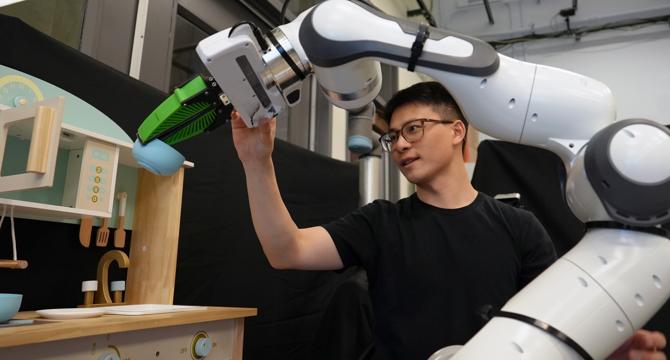Mit
4w
57

Image Credit: Mit
Robotic helper making mistakes? Just nudge it in the right direction
- MIT and NVIDIA researchers have developed a new framework for correcting robot behavior through simple interactions, such as pointing or nudging the robot in the right direction.
- This method allows users to provide real-time human feedback to guide the robot without the need for retraining the machine-learning model.
- The framework performed 21 percent better than alternative methods that did not incorporate human interventions.
- It enables users to guide factory-trained robots in household tasks without the robot having prior knowledge of the environment or objects.
- The method was developed by MIT researchers including Felix Yanwei Wang, with support from NVIDIA colleagues.
- Their approach allows users to correct robot misalignment by pointing at the object, tracing a trajectory, or physically adjusting the robot's arm.
- The framework uses a specific sampling procedure to ensure that the robot selects actions aligned with the user's goal.
- By incorporating user interactions, the robot can improve its behavior through immediate corrections and continuous learning.
- The researchers aim to enhance the speed of the sampling procedure and explore policy generation in new environments in future research.
Read Full Article
3 Likes
For uninterrupted reading, download the app